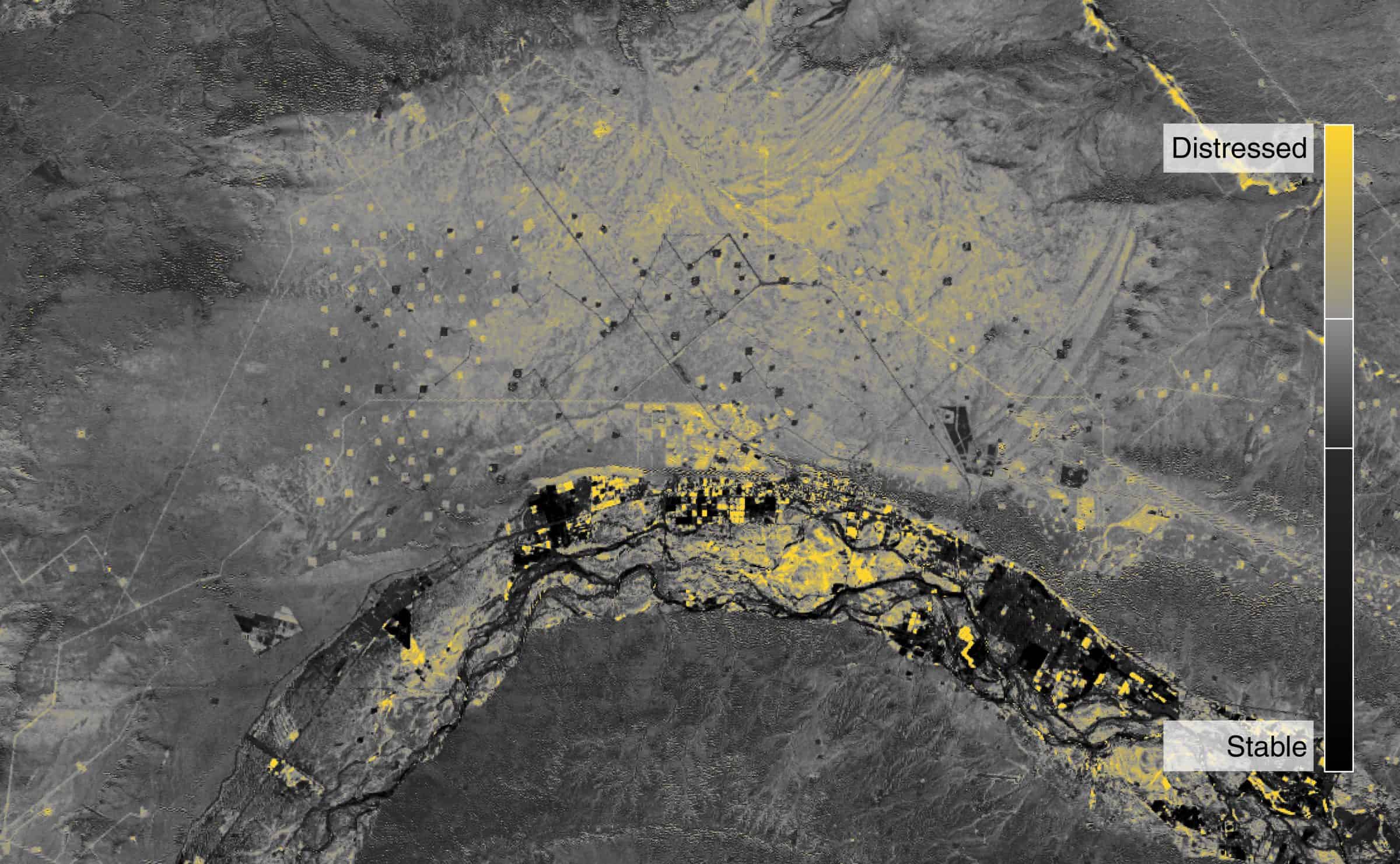In Partnership With
Additional Funding
Collaborators
- The Guardian
- Comunidad Mapuce Campo Maripe
- Confederación Mapuche del Neuquén
- O11CE (Arena Documenta + m7red)
- Observatorio Petrolero Sur
Methodologies
Forums
Vaca Muerta, Argentina, is one of the world’s largest deposits of shale oil and gas. It is also home to indigenous communities, part of the Mapuche people who live between Chile and Argentina.
Argentinian companies have operated in the region for decades. In 2013 however, an agreement saw the US energy giant Chevron enter Vaca Muerta, in a move which opened up the region for the first time to the international oil and gas industry. Chevron was soon followed by Shell, Total, ExxonMobil, and others.
In collaboration with the Guardian, as part of their series ‘The Polluters’ , we investigated a local Mapuche community’s claim that the oil and gas industry has irreversibly damaged their ancestral homeland, and eroded their traditional ways of life.
Our research was organised around 3 objects: a community building belonging to the local Mapuche community, an oil waste treatment facility that is the subject of an ongoing lawsuit, and an extraction platform which was the site of a major oil spill.
The community building
In 2013, the local Mapuche community built this building, from which to monitor the expansion of industry in their lands. The building was soon burnt down, in an intentional fire. Our investigation of the community centre was developed in collaboration with a local activist group, O11CE, and in conversation with the local Mapuche community and their regional confederation, Argentinian anthropologist Jorgelina Villarreal, and an industry monitoring NGO, Observatorio Petrolero Sur.
The treatment facility
In August 2018, the Mapuche Confederation of Neuquén filed a lawsuit against the US oil waste management company Treater, alleging that the conditions at a site in Vaca Muerta breached a number of environmental regulations. The lawsuit lists a number of international companies, which it alleges share the blame for environmental damage caused by the facility. Those companies include Shell, Total, ExxonMobil, and a subsidiary of BP, Pan-American Energy. The lawsuit relies on video material captured by workers at the site, as well as material gathered by Greenpeace.
The La Caverna oil spill
The La Caverna extraction site, operated jointly by Argentina’s state-run oil company YPF, and US oil services provider Schlumberger, was the site of a major oil spill in August 2018. We investigated using video material shared on social media by workers at the site, and local activists, as well as news footage and satellite images.
NDVI analysis

Above, these remote sensing analyses use a technique called Normalised Difference Vegetation Index (NDVI) to analyse the vegetation cover in the region. Yellow indicates areas that are cleared of vegetation, including oil platforms, the network of roads that connect them, as well as the city of Añelo.
The image below shows the relative difference in vegetation between 2013 and 2019. In yellow, areas of ‘distressed vegetation’ are visible along the Neuquén River, as well as throughout the plateau region whose ownership is disputed between the local Mapuche community and the companies YPF and Chevron.
